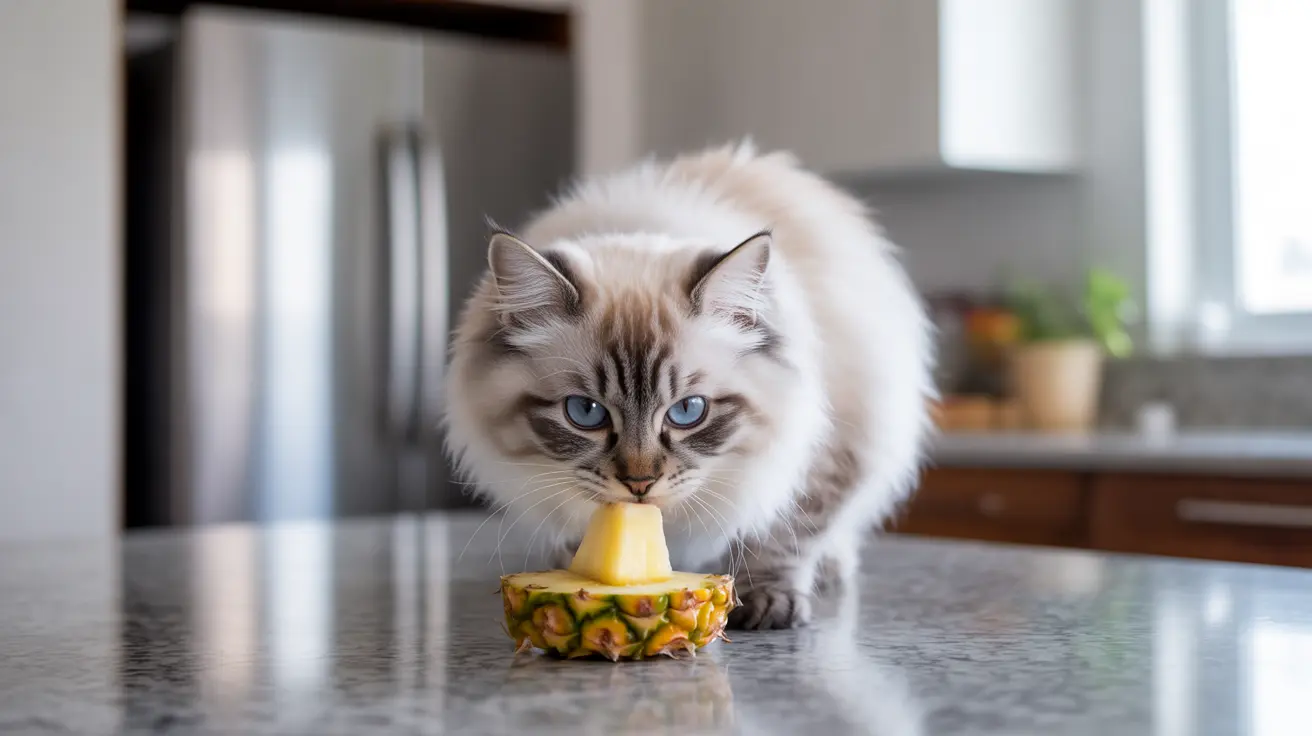Safety and Nutritional Value of Pineapple for Cats
Pineapple is not toxic to cats, which is good news for curious pet owners. The fruit contains several beneficial nutrients, including manganese, vitamin C, folate, and copper. However, it's important to understand that cats' digestive systems aren't designed to process fruits efficiently.
While these nutrients can be beneficial, cats obtain their necessary vitamins and minerals from meat-based protein sources, making pineapple more of an occasional treat than a nutritional supplement.
Potential Benefits and Risks
Benefits
When served properly, pineapple can offer some modest benefits:
- Additional hydration from the fruit's high water content
- Trace amounts of beneficial minerals
- A novel texture experience for curious cats
- Small amounts of dietary fiber
Risks
However, there are several important risks to consider:
- High sugar content that can contribute to obesity and dental issues
- Potential digestive upset from excessive fiber
- Risk of choking on tough pieces
- Possibility of diabetes development with regular consumption
How to Safely Serve Pineapple to Your Cat
If you decide to offer pineapple to your cat, follow these essential guidelines:
- Only serve fresh, ripe pineapple
- Remove all skin, core, and tough parts
- Cut into tiny, manageable pieces
- Limit portions to a few small bites
- Monitor your cat for any adverse reactions
What to Avoid
Never feed your cat:
- Canned pineapple in syrup
- Unripe pineapple
- Pineapple skin or leaves
- Large pieces that could pose a choking hazard
- Dried or processed pineapple products
Special Considerations for Certain Cats
Some cats should avoid pineapple entirely:
- Diabetic cats
- Overweight cats
- Cats with sensitive stomachs
- Those with known food allergies
- Cats with kidney issues
Frequently Asked Questions
Can cats safely eat fresh pineapple as a treat?
Yes, cats can safely eat small amounts of fresh pineapple as an occasional treat. However, it should be properly prepared by removing all skin and tough parts, and cut into tiny pieces.
What are the health benefits and risks of feeding pineapple to cats?
Benefits include trace minerals and additional hydration, while risks include potential digestive upset, high sugar content that can lead to obesity, and possible dental issues if fed regularly.
How much pineapple is safe to give my cat without causing digestive issues?
Limit pineapple to 1-2 small pieces (about the size of a cat kibble) once or twice a week. Never exceed 10% of your cat's daily caloric intake in treats.
Which parts of the pineapple should I avoid feeding my cat?
Avoid feeding your cat the skin, leaves, core, and any tough or fibrous parts of the pineapple. These can cause digestive issues or pose choking hazards.
Is canned pineapple safe for cats compared to fresh pineapple?
Fresh pineapple is always preferable to canned. Canned pineapple often contains added sugars and preservatives that aren't healthy for cats. If you must use canned, choose varieties packed in natural juice rather than syrup.
Conclusion
While cats can safely eat small amounts of fresh pineapple, it should only be offered as an occasional treat. Remember that cats are carnivores and don't require fruits in their diet. If you choose to share pineapple with your feline friend, do so sparingly and always monitor their response to this tropical treat.






